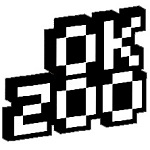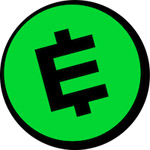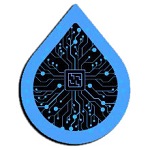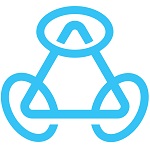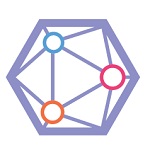DePIN
| Projects | Description | Interest lvl | ||
|---|---|---|---|---|
io.net is revolutionizing ML applications on the Solana Blockchain by creating the world's largest GPU colony, aggregating 1 million GPUs. It harnesses underuti ... | ||||
Jambo is onboarding the next billion users onto web3 by building the superapp of Africa that will educate, bank, and entertain the continent. The Jambo team is ... | ||||
The Nosana Network will be the leading provider of decentralized CPU-based Dev(Ops) solutions, revolutionizing the development process of Metaverse projects. | ||||
CUDIS is a Web3 AI wellness company that develops a smart ring for monitoring health metrics. The ring allows users to access their health data via the Solana b ... | ||||
Acurast is the largest decentralized compute network, leveraging smartphones to deliver secure, scalable, and confidential computing. By harnessing built-in TEE ... | ||||
MagicBlock is a network built on top of Solana for developing open, decentralized games and consumer applications. It enhances Solana’s capabilities while mai ... | ||||
OKZOO introduces the world's one of the first urban-scale decentralized environmental data network through an interconnected system of physical AIoT devices. OK ... | ||||
XMAQUINA is a decentralized ecosystem giving members direct access to the rise of humanoid robotics and Physical AI—technologies set to reshape the global eco ... | ||||
Exabits is not just a player in the AI industry but a fundamental component. We supply GPUs and technologies to compute marketplaces, and serve a wide range of ... | ||||
DoubleZero is a global fiber network for high performance distributed systems and blockchains. The protocol enables permissionless contribution of independent f ... | ||||
Bless is a decentralized edge compute network that delivers on-demand CPU and GPU resources close to end users, facilitating access to AI, machine learning, adv ... | ||||
Yuliverse is an alternative reality metaverse parallel to the real world. As a game-based social application, Yuliverse features thousands of engaging and imagi ... | ||||
aZen DePin is a decentralized infrastructure for ubiquitous computing that utilizes blockchain technology to create a shared economy of computing power. | ||||
Hivello, led by distinguished blockchain payment solution pioneers, is dedicated to transforming the accessibility of decentralized services globally. As a lead ... | ||||
The Impossible Cloud Network (ICN) is transforming cloud computing by building the world’s first open cloud platform. This revolutionary approach breaks away ... | ||||
Huddle01 is a decentralized real-time communication (dRTC) network aimed at democratizing digital connectivity. It reduces reliance on centralized servers by di ... | ||||
XProtocol is an Entertainment-focused DePIN Superchain designed for mass adoption. It is powered by XForge, the first node-operated blockchain DePIN phone, allo ... | ||||
WeatherXM is a weather network that relies on the power of the community to deploy and maintain weather stations. By doing so, participants not only contribute ... | ||||
Rivalz introduces an AI-driven DePIN RollApp, building the future of AI Data Provenance and enabling a modular AI-app ecosystem. $RIZ will be the native token o ... | ||||
The EARNM Loyalty Ecosystem is an earnings-focused ecosystem that enables Web2/Web3 participants from all socioeconomic backgrounds to find new and valuable way ... | ||||
Silencio is a pioneering community-driven network dedicated to combating noise pollution by motivating users to contribute hyper-local noise data using a compli ... | ||||
Naoris Protocol is a Post-Quantum powered DePIN for Cybersecurity & Digital Trust. A decentralized cybersecurity platform designed to secure and validate the in ... | ||||
Ozak AI is an agentic AI platform that uses predictive AI to deliver real-time financial intelligence by combining machine learning models with decentralised in ... | ||||
SpoticCoi is a all-in-one platform, through which you can activate your social media style, carry out your tasks, and achieve your goals across a variety of vir ... | ||||
Introducing ExoraPad, The First AI Integrated Launchpad for RWAs, DePIN & Premium Tier Projects on The XRP Ledger. | ||||
iAI is a groundbreaking project focused on creating an AI Platform-as-a-Service (PaaS) that delivers intelligent automation solutions accessible to everyone, an ... | ||||
WhiteBridge build AI Agents decentralized system for access trustworthy, actionable informatio. | ||||
DepinTech is building decentralized 5G networks and infrastructure, offering solutions in 5G connectivity paired with token reward systems. | ||||
TonGPU - A Layer 1 designed specifically for AI and DePin computing power. | ||||
XNET Mobile is a next-gen neutral-host carrier working alongside major carriers to offload data and enhance connectivity. By powering a decentralized future and ... | ||||
Adix is designed to cater to a diverse range of users within the eCommerce industry. | ||||
SpaceComputer is a project focused on building decentralized computing infrastructure beyond Earth's surface. It proposes the deployment of cryptographically se ... | ||||
ROVR is a decentralized network designed for collecting, processing, and distributing high-definition, real-time 3D spatial data. It leverages technologies l ... | ||||
EdgeX integrates edge computing, AI Agents & WEB3 to create a decentralized, secure, free global infrastructure, offering fast AI services worldwide. | ||||
NodefoundryAI aggregate decentralized AI solutions, so you don't have to. Unlock the power of Decentralized AI. | ||||
Voltix is a decentralized network designed to address the global CPU shortage by redistributing unused computational power. Voltix provides AI companies with ac ... | ||||
Combinder is a Decentralized Physical Infrastructure Network (DePIN) that transforms household appliances into Distributed Energy Resources (DERs), enabling use ... | ||||
ZkAGI introduces an approach to privacy-preserving AI by integrating the computational capabilities of a GPU DEPIN network with the security features of a ZKML ... | ||||
A unified platform that integrates AI data, models, and computing into a seamless, one-stop solution. | ||||
Grafilab is building a decentralized AI ecosystem that empowers ordinary people to participate in AI development, deployment and commercialization. | ||||
DePINed provides a secure way to rent high-performance GPUs for AI development, data analysis, rendering, and more. Powered by $DEPIN Tokens, our peer-to-peer p ... | ||||
Sui DePIN is a data platform leveraging AI and blockchain for secure sharing and monetization. | ||||
Copute.ai is a decentralized GPU computing network leveraging Web3 technology to democratize access to high-performance GPU resources for AI, gaming, and cloud ... | ||||
AiGO Network is an AI-powered, decentralized platform designed to address challenges in urban mobility by capturing mobility data and encouraging community cont ... | ||||
PinGo serves as a medium - bridges idle computing power, effectively addressing problems of idle resources, powered by AI, DePin and Decloud. Seed ... | ||||
The Nexus zkVM (zero-knowledge virtual machine) is a modular, extensible, open-source, highly-parallelized, prover-optimized, contributor-friendly, zkVM written ... | ||||
Multiple Network is a Web3 DePIN project utilizing SD-WAN technology to build a network layer for high-powered transmission of digital assets and data. It combi ... | ||||
Nubila is a data oracle platform specializing in delivering accurate and actionable Environmental, Social, and Governance (ESG) data to the Decentralized Physic ... | ||||
XYO is the original DePIN (Decentralized Physical Infrastructure Network). It was built to create a fully trustless oracle for Web3 and Web2 users. The XYO toke ... | ||||
What is DePIN
Blockchain technology is moving beyond the virtual space. The DePIN concept is responsible for bringing decentralized projects from online to the real world. It includes projects that create a direct connection to the real world through special infrastructures made of physical devices.
DePINs are Decentralized Physical Infrastructure Networks. The term refers to a scheme for application integration of blockchain into physical infrastructure.
How does DePIN work
Blockchain solutions are used to manage systems like sensors, network devices, physical storage, wireless infrastructure, energy, and many other things that can be used to achieve common goals. This concept model enables an autonomous, fully transparent and secure database.
Smart contracts are usually responsible for automating such systems. This is a digital analog of conventional contracts, in which it is possible to prescribe the terms of its implementation.
It turns out that blockchain technology can play the role of a crystal-clear administrator, who is able to automate the work of the system, control every step, and instantly provide reports with all the evidence. At the same time, he does not need to be paid. The ideas about creating such projects formed the basis of DePIN.
There are two types of DePINs:
- Physical Resource Networks (PRN). Complex systems comprising physical objects, devices, infrastructure and resources that interact with each other to achieve specific goals. PRNs are closely related to the concepts of the Internet of Things (IoT) and digital transformation, where objects and devices interact with each other and with people through communication and data exchange networks.
- Digital Resource Networks (DRN). Here, digital resources, data and information interact with each other and are processed to ensure optimal management and utilization of information assets. DRNs play an important role in today’s information society, where data is becoming the main resource for decision-making, innovation and business development.
DePIN is sometimes described through Proof of Physical Work. This refers to a situation where a blockchain protocol rewards users for performing physical work that is provable and evaluated.
Key advantages of DePINs
Horizontal scalability
A network can simultaneously include a huge number of participants (so large that it can compete with large centralized projects), and blockchain allows for efficient and mutually beneficial cooperation.
Decentralization
In the crypto world, decentralization is recognized as an unquestionable good. Here, the absence of a center allows a well-organized network to remain flexible and not have the growth ceiling that centralized projects may have.
Cost-effectiveness
The costs of a network using blockchain should be lower than centralized solutions. Moreover, such networks are highly attractive to new entrants because they offer a clear process for entry and revenue generation.
Pricing
Compared to centralized solutions, DePINs have lower costs and therefore can offer competitive pricing to consumers.
Assurance
DePIN projects, by virtue of the fact that they use real equipment to perform useful tasks, can boast that their capitalization and price are to some extent secured by the equipment and the work it performs.
Also, DePIN is trying on a long-proven system of rewards for work done in the cryptocurrency world – to incentivize participation in physical infrastructure networks. Participants receive project tokens (or, theoretically, other cryptocurrency) for their active contribution to the project. Therefore, DePIN projects usually have their own cryptocurrency.
Examples of DePIN projects
To illustrate, here are a number of examples of human activities where DePIN projects have already found their application:
Power Ledger
A peer-to-peer platform for energy trading. The aim is to decentralize the energy network. Participants find each other to realize the surplus of real electricity they receive.
HealthBlocks
Rewards users for providing health-related data, helping medical companies and doctors in private practice. Users can connect their fitness devices (e.g., smart bands) to the app to collect data and track fitness goals. Users are rewarded with HEALTH tokens for completing quests or submitting data.
NuNet
Artificial intelligence-based computing marketplace. The goal is to efficiently utilize idle computing resources.
DIMO
Digital Infrastructure for Moving Objects, a platform that allows vehicle owners to monetize data and telemetry collected from their vehicles’ sensors.
Filecoin
Decentralized file storage providers where users share their computer’s available disk space with others who need secure and decentralized storage.
Conclusion
The emergence of DePIN as a category describing the applied use of blockchain for the sake of implementing large decentralized infrastructure projects means global changes for the crypto community. This is confirmed by the number of already existing DePIN projects. DePIN has a serious chance to become a separate sector of the crypto economy.







